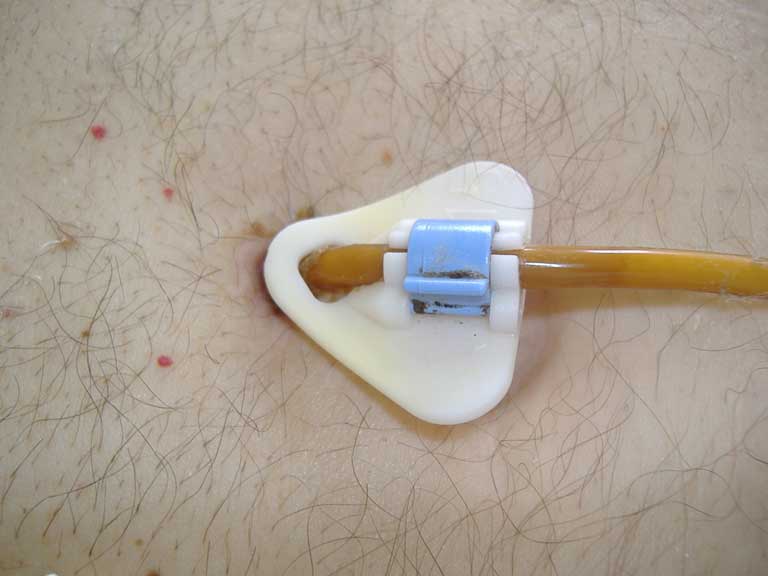Catheters and Feeding Tubes
For people who have trouble eating, a feeding tube can supply nutrients directly to the stomach.

Catheters
A catheter is a thin tube that is inserted into the body to deliver or remove fluids. There are several situations in which someone might use a catheter, including:
Urinary incontinence: People who have difficulty controlling their bladder, such as those with spinal cord injuries or certain neurological conditions, may use a catheter to regularly empty their bladder.
Urinary retention: People who are unable to empty their bladder due to an obstruction or other condition may use a catheter to relieve the retention.
Surgery: People who are undergoing surgery on the urinary or reproductive systems may have a catheter inserted to drain urine during and after the procedure.
Long-term care: People who are in long-term care facilities or require assistance with daily activities may use a catheter to regularly empty their bladder.
Medical procedures: People who are undergoing certain medical procedures, such as a cystoscopy or a urodynamic study, may have a catheter inserted to assist with the procedure.
Feeding tubes
A feeding tube, also known as a nasogastric or percutaneous endoscopic gastrostomy (PEG) tube, may be necessary in several situations where a person is unable to eat or drink enough to maintain proper nutrition. Some examples include:
Neurological conditions: People with conditions such as multiple sclerosis, ALS, or brain injury may have difficulty swallowing or may be unable to eat and drink enough to maintain proper nutrition.
Cancer: People undergoing chemotherapy or radiation therapy for cancer may experience nausea, vomiting, and loss of appetite, making it difficult to eat and drink enough to maintain proper nutrition.
Gastrointestinal disorders: People with gastrointestinal disorders such as Crohn’s disease or ulcerative colitis may have difficulty swallowing or may be unable to eat and drink enough to maintain proper nutrition.
Advanced age: Older adults may have difficulty eating and drinking enough to maintain proper nutrition due to conditions such as dementia, Parkinson’s disease, or other age-related conditions.
Post-surgical recovery: People who have had surgery on the throat, esophagus, or stomach may have difficulty swallowing or may be unable to eat and drink enough to maintain proper nutrition during recovery.
Long-term unconsciousness: People who are in a coma or are in a persistent vegetative state may require a feeding tube to ensure they receive proper nutrition.

